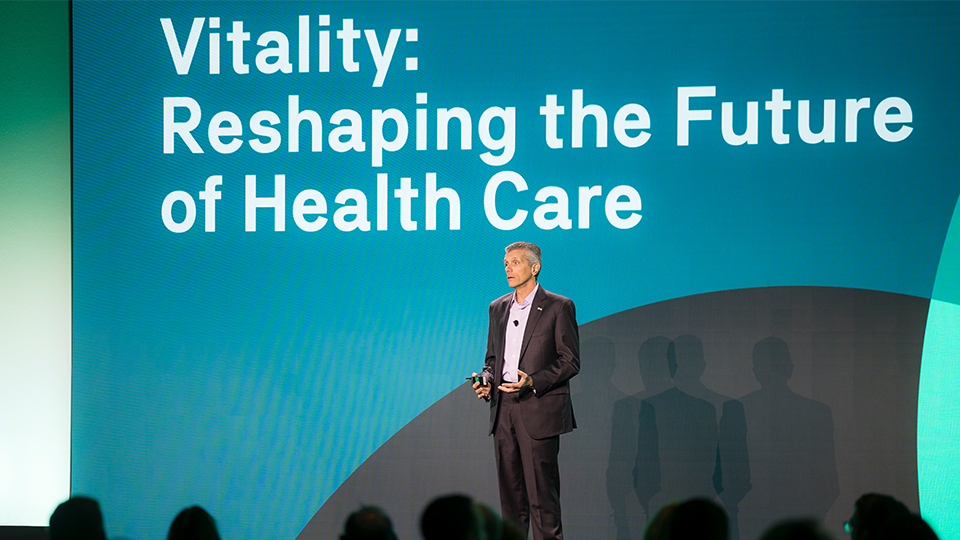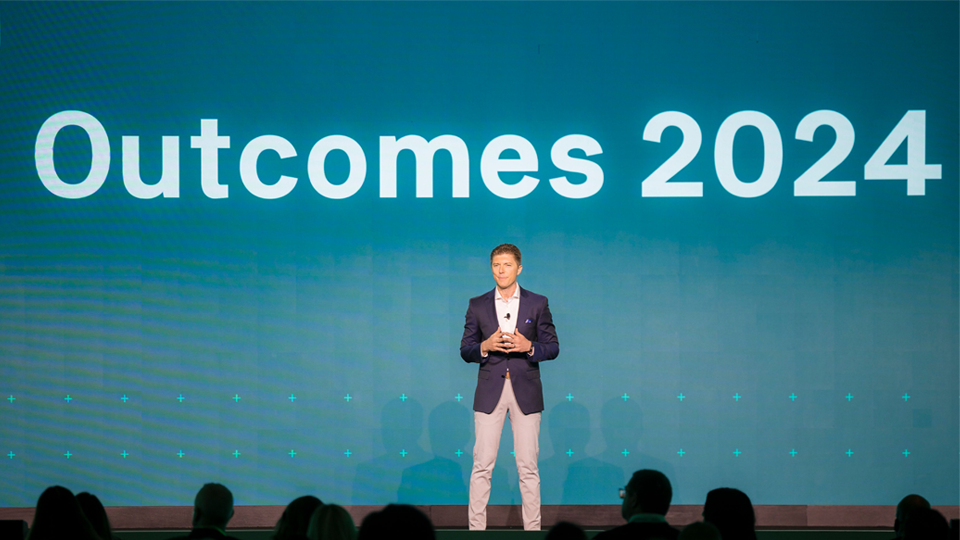Thriving communities are comprised of vital businesses, organizations, and people.
That was the key takeaway of the keynote address at the Evernorth Outcomes event in Washington, D.C., earlier this week, where The Cigna Group chairman and CEO David Cordani presented findings from recent research that looks at the vitality of adults in the United States.
Vitality offers a comprehensive measure of health, well-being, and human performance, and it is plateauing in the United States and in other developed countries. There are several reasons why the vitality of Americans is on the decline.
“We see that a significant amount of our cost correlates to chronic conditions, which continue to grow with complexity,” he noted. “And now we are beginning to recognize, more comprehensively and stimulated by the dynamics of the pandemic, that we have a mental health challenge within our society. And mental health and physical health are inextricably linked. That’s the backdrop of what we all step into every day in the health care space.”
The science of vitality
Working alongside leading experts, The Cigna Group developed a scientifically validated measurement tool allowing us to quantify and analyze health and well-being as it truly exists – composed of multiple, interdependent, dynamic factors. The result? The Evernorth Vitality Index.
One key finding focuses on the prevalence and impact of mental health challenges on people’s overall health. In fact, according to the research, adults with strong mental health are 10 times more likely to have high vitality than those with fair or poor mental health.
Additionally, Gen Z adults (those born between 1997 and 2005) had lower levels of vitality than all other generations. Gen Z is the loneliest and least resilient demographic today. This was true in 2022 and again in 2023. No other age group feels less connected to their family or less optimistic about the direction that society is heading in.
Another key insight Cordani shared from the research is that vitality has a massive impact on people’s success in their work lives.
“If we could lift the vitality of an individual, we lift the performance of a corporation or an employer,” Cordani said. “We lift performance through higher levels of engagement and presenteeism, lower levels of turnover, and higher productivity – and that’s before we even get to the medical cost dimension.”
The research found workers with high vitality are more likely to enjoy their work, feel more capable, be confident they can do their jobs well, and have more energy and enthusiasm at work.
How organizations can improve the health and vitality of their employees
Most health care expenses and burdens are preventable and due to lifestyle factors such as diet, exercise, and smoking, Cordani said.
“I would ask you to consider the answer to this question: What is the least expensive health care there is? The answer is, the one that never needs to happen,” he said, alluding to the need for a greater focus on prevention.
Strategically influencing or changing behaviors that contribute to poor or declining health can help address many of the health challenges facing society, he said, illustrating some of the ways organizations can build a culture of health and vitality:
- Ensuring individuals have access to the information and tools they need to make healthier decisions
- Supporting mental health through solutions while encouraging dialog to reduce stigma and drive care
- Creating an environment that is flexible enough to account for people’s multi-dimensional lives and commitments
- Providing incentives for workers to come together and collaborate in person, especially Gen Z workers
- Rewarding healthy choices
Building a culture of health needs to be collaborative, Cordani said. “We can systemize ourselves to achieve a much better sustainable outcome. But we cannot just do it with a decree. We cannot just do it with one person saying it. We must operationalize this, so everybody owns it.”



